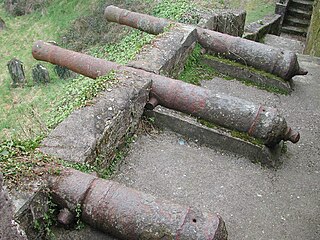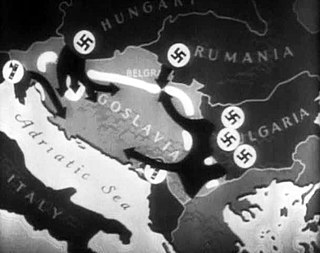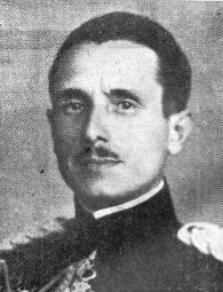A division is a large military unit or formation, usually consisting of between 6,000 and 25,000 soldiers.

A battalion is a military unit, typically consisting of 300 to 1,000 soldiers commanded by a lieutenant colonel, and subdivided into a number of companies. In some countries, battalions are exclusively infantry, while in others battalions are unit-level organizations.

A brigade is a major tactical military formation that typically comprises three to six battalions plus supporting elements. It is roughly equivalent to an enlarged or reinforced regiment. Two or more brigades may constitute a division.
Corps is a term used for several different kinds of organization. A military innovation by Napoleon I, the formation was first named as such in 1805. The size of a corps varies greatly, but from two to five divisions and anywhere from 40,000 to 80,000 are the numbers stated by the US Department of Defense.

In military organizations, an artillery battery is a unit or multiple systems of artillery, mortar systems, rocket artillery, multiple rocket launchers, surface-to-surface missiles, ballistic missiles, cruise missiles, etc., so grouped to facilitate better battlefield communication and command and control, as well as to provide dispersion for its constituent gunnery crews and their systems. The term is also used in a naval context to describe groups of guns on warships.
A group is a military unit or a military formation that is most often associated with military aviation.
This is a list of words, terms, concepts, and slogans that have been or are used by the German military. Ranks and translations of nicknames for vehicles are included. Also included are some general terms from the German language found frequently in military jargon. Some terms are from the general German cultural background, others are given to show a change that was made before or after the Nazi era. Some factories that were the primary producers of military equipment, especially tanks, are also given.
Abteilung is a German word that is often used for German or Swiss military formations and depending on its usage could mean detachment, department or battalion; it can also refer to a military division. In German, it is used both for military and civilian departments.

The invasion of Yugoslavia, also known as the April War or Operation 25, was a German-led attack on the Kingdom of Yugoslavia by the Axis powers which began on 6 April 1941 during World War II. The order for the invasion was put forward in "Führer Directive No. 25", which Adolf Hitler issued on 27 March 1941, following a Yugoslav coup d'état that overthrew the pro-Axis government.

The Bulgarian Land Forces are the ground warfare branch of the Bulgarian Armed Forces. The Land Forces were established in 1878, when they were composed of anti-Ottoman militia (opalchentsi) and were the only branch of the Bulgarian military. The Land Forces are administered by the Ministry of Defence, previously known as the Ministry of War during the Kingdom of Bulgaria.
The Balkan Front was a military formation of the Bulgarian People's Army, intended for wartime use under the general direction of the Soviet General Staff. If a war was to have broken out between NATO and the Warsaw Pact, the bulk of the Bulgarian army would have been assigned to it.
During the Second World War the British Army deployed armoured divisions and independent armoured and tank brigades.

A squadron in air force, army aviation, or naval aviation is a unit comprising a number of military aircraft and their aircrews, usually of the same type, typically with 12 to 24 aircraft, sometimes divided into three or four flights, depending on aircraft type and air force. Land based squadrons equipped with heavier type aircraft such as long-range bombers, cargo aircraft, or air refueling tankers have around 12 aircraft as a typical authorization, while most land-based fighter equipped units have an authorized number of 18 to 24 aircraft.

The Yugoslav order of battle before the invasion of Yugoslavia includes a listing of all operational formations of the Royal Yugoslav Army, Royal Yugoslav Army Air Force and Royal Yugoslav Navy immediately prior to the World War II invasion of that country in April 1941.

The 5th Army was a Royal Yugoslav Army formation which commanded five divisions and two independent detachments during the German-led Axis invasion of the Kingdom of Yugoslavia in April 1941 during World War II. It was commanded by General Vladimir Cukavac, and was responsible for the Romanian and Bulgarian borders between the Iron Gates and the Greek border.

The Red Banner Central Asian Military District was a military district of the Soviet Armed Forces, which existed in 1926–1945 and 1969–1989, with its headquarters at Tashkent (1926–1945) and Almaty (1969–1989). By USSR Order No.304 of 4 June 1926, the Turkestan Front was renamed the Central Asian Military District.
The following is a hierarchical outline for the Bulgarian People's Army at the end of the Cold War. It is intended to convey the connections and relationships between units and formations. At the end of the Cold War in 1989, the Bulgarian People's Army (BPA) reported to the Ministry of People's Defence (Bulgaria). The BPA included the Bulgarian Land Forces; the Air and Air Defence Forces; Navy; and Construction Troops.

The Coastal Troops are a service arm of the Russian Navy, designed to guard Russian fleets' forces, troops, population and seashore objects against exposure to enemy surface ships; to defend naval bases and other important facilities of the Fleets from the land, including against amphibious and air assaults; to be landed and act in the course of amphibious and air assaults; to support the Russian Ground Forces in the course of defence against airborne and amphibious assaults; to destroy surface ships, boats and amphibious transport means within the fire envelope.
The 2nd Cavalry Division was a Division of the Red Army that existed during World War II.








